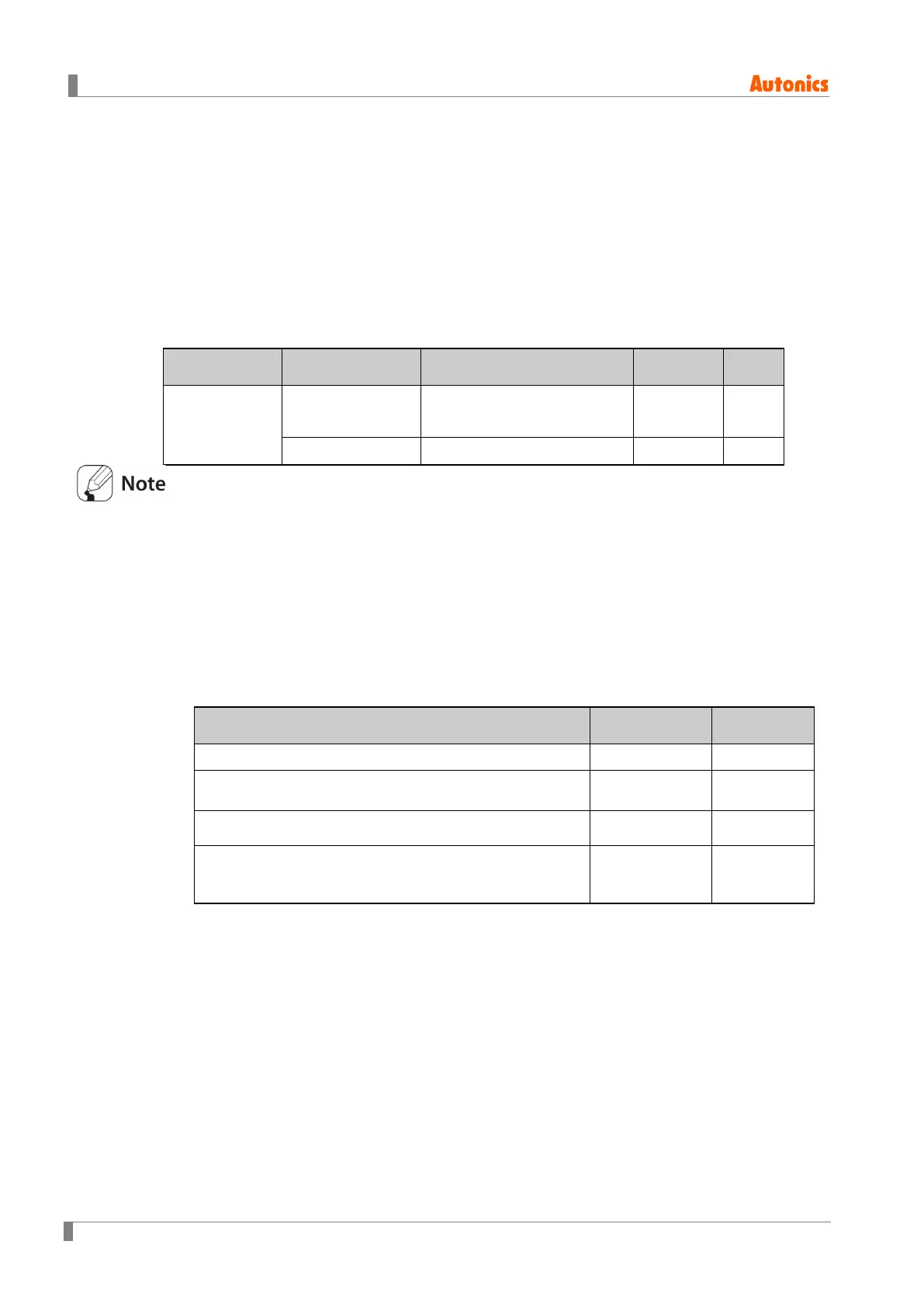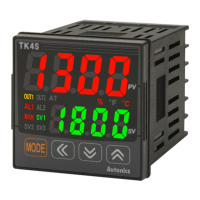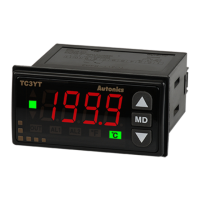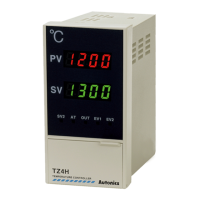6 Parameter Settings and Functions
52 © Copyright Reserved Autonics Co., Ltd.
6.2.4 Ramp function
Ramp is a feature used to configure the changed temperature per unit time toward SV (setting
value). The feature limits change rate of SV and thereby restricts sudden temperature changes
(increase and decrease) in the control subject.
Ramp is commonly used in applications where rapid temperature changes (increase and
decrease) could impact negatively on the control subject.
SV determines the control of the control subject temperature. The SV changes based on the
configured changed temperature per unit time (hereinafter referred to as RAMP SV).
Ramp Up change rate and Ramp Down change rate can be set independently.
Setting group Parameter Setting range
Unit
Control
Operation
Ramp_Up/Down
Change Rate
0 (OFF) to 9999 0
℃/℉/
Digit
Ramp Time Unit SEC, MIN, HOUR MIN -
For ceramic or pottery furnaces, rapid heating may break the furnace subject. Apply Ramp
Up Change Rate to control the temperature.
Activating the ramp feature when the ramp is not in operation limits the rate of SV (setting
value) change based on PV (present value). Changing SV or ramp parameters when the
ramp is in operation limits the rate of SV change based on SV at the point of the change.
Alarm activation with the ramp in operation depends on the final SV.
Setting the rate of ramp change to 0 deactivates the ramp feature.
(1) Ramp status by modes
Operation status RAMP rate
All modes. When 0 Inactive
OPEN, HHHH, LLLL, Auto-tuning, Auto→Manual,
RUN→STOP
Irrespective of
conditions.
Inactive
OPEN, HHHH, LLLL, after Auto-tuning, PV = SV
Irrespective of
conditions.
Inactive
Power On, SV change, switch from STOP to RUN, switch
from Manual to Auto, Ramp Rate or Ramp time unit
change
When not 0 Active
